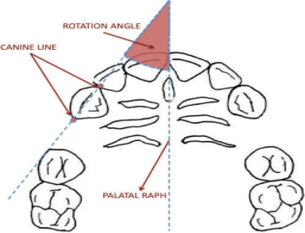Abstract
Canine, being the cornerstone of the dental arches, shares an important role in oral functions, esthetics, arch shape and stability. With the new bracket systems that have come to light, which have reduced friction, there is not much literature on how much of a rotation control they have on the cuspids. Hence this study is conducted to compare the efficiency of two least frictional resistance offering brackets – Self-ligating and synergy brackets in terms of rotational control. The study was designed as a prospective randomized controlled split-mouth clinical trial, which included 16 subjects of ages 12-30 years, divided into two groups, left, and the right quadrants receiving Self Ligating and Synergy brackets based on simple randomization, along with a 19*25" SS wire and closed coil springs for individual canine retraction. The patients were reviewed every 21 days for four appointments, and records were taken for each review. Photographs were taken of the cast at every review, and the degree of canine rotation was measured and compared. The results indicate that there is no statistical difference between both the groups in the amount of canine rotation during individual canine retraction with a p-value greater than 0.05 at every interval. The results also indicate that there is a significant amount of canine rotation in Group 1 – Self-ligating brackets and Group 2 – Synergy brackets independently, when comparing T0 to every interval. Overall results show that there is no significant statistical difference between Synergy and Self-Ligating brackets in the amount of canine rotation during canine retraction. The mean or average amount of canine rotation for Group I Self-ligating was 3.32º ±6.55°. The mean or average amount of canine rotation for Group 2 Synergy was 4.08º ±3.85°.
Full text article
Authors

This work is licensed under a Creative Commons Attribution-NonCommercial-NoDerivatives 4.0 International License.

